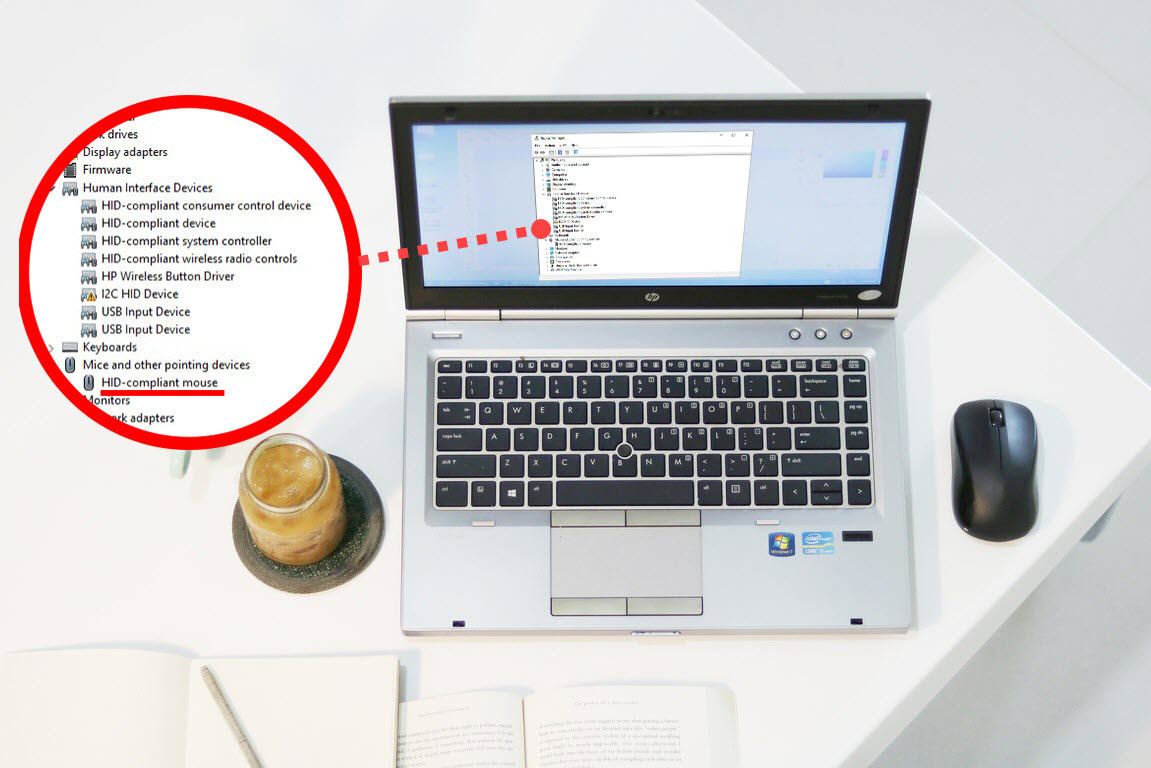
Is your touchpad not working all of a sudden? You may have read all the troubleshooting guides online, but only to find that the touchpad driver is missing from the Device Manager. How to uninstall/reinstall the driver if it’s not listed in “Mouse and Pointing Devices”?
Why is your touchpad driver missing?
For those who would like to toggle between a mouse and a touchpad, you would hate the scenario where you can’t use your touchpad, nor can you fix the driver issues by uninstalling it.
Why is your touchpad driver missing? The most common reason is due to problems with the original driver that has been installed. As you know, software is prone to glitches. Drivers are no exception to this rule.
In some cases, the touchpad driver will be missing because the version that you have is not right for the operating system or perhaps because it did not install correctly in the first place. In most cases though, the problem can be fixed by using one of the two following methods:
Try these fixes
- Perform an in-place Windows Update
- Update your touchpad driver
- Run the hardware troubleshooter
- Check your battery
- Restore your BIOS to default
- Repair corrupt files
Fix 1. Perform an in-place Windows Update
Prior to any troubleshooting steps, we would recommend that you check for Windows updates to make sure you’re running the latest Windows version.
Windows Update will sometimes fix some driver issues by replacing them with the correct driver for the device you’re having problems with.
1. Type check for updates in the Search box and select Check for updates.
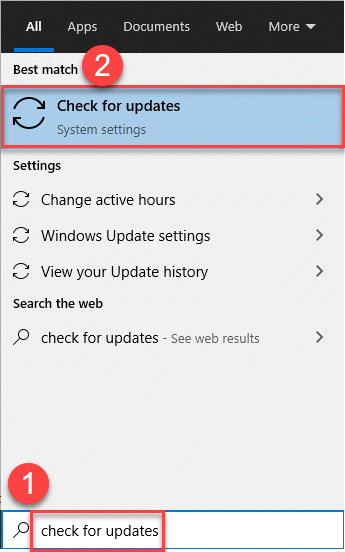
2. Click the Check for updates button.

3. If your Windows system is already up to date, you can click View optional updates and check if there’re any new drivers listed.
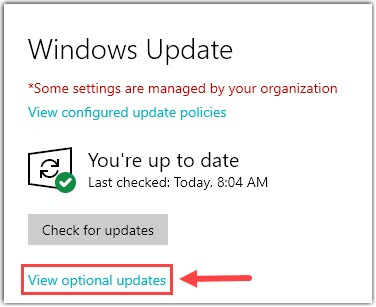
4. Check all the drivers that require updates, and click the Download and install button.
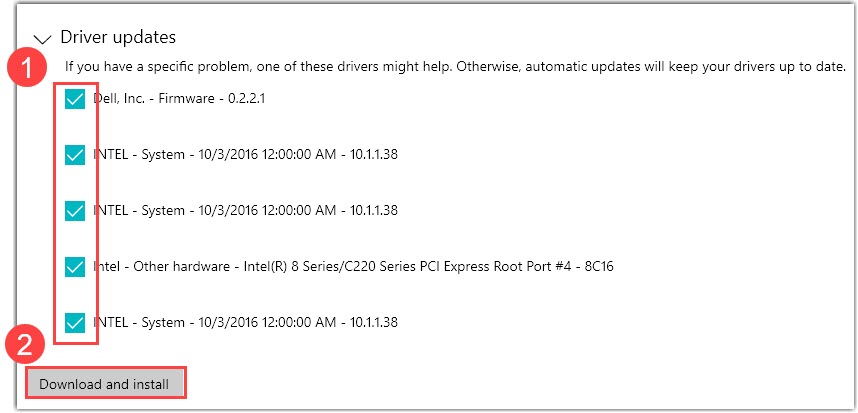
5. Once complete, restart your PC for the changes to take effect.
Check if your touchpad is working again. If it’s not working, go back to the Device Manager, and check if your touchpad driver is listed under Mouse and Pointing Devices.
No luck? Don’t worry. We have a few more fixes here for you to try.
Fix 2. Update your touchpad driver
When it’s impossible for you to update the touchpad driver via the Device Manager, you can update it manually by visiting the manufacturer’s official website to download the correct version of the driver or update it automatically with Driver Easy.
Driver Easy will automatically recognize your system and find the correct drivers for your touchpad, and your Windows version, and then it will download and install them correctly. You won’t need to worry about finding the right version that is compatible with your system, and how to install them properly.
1. Download and install Driver Easy.
2. Run Driver Easy and click the Scan Now button. Driver Easy will then scan your computer and detect any problem drivers.
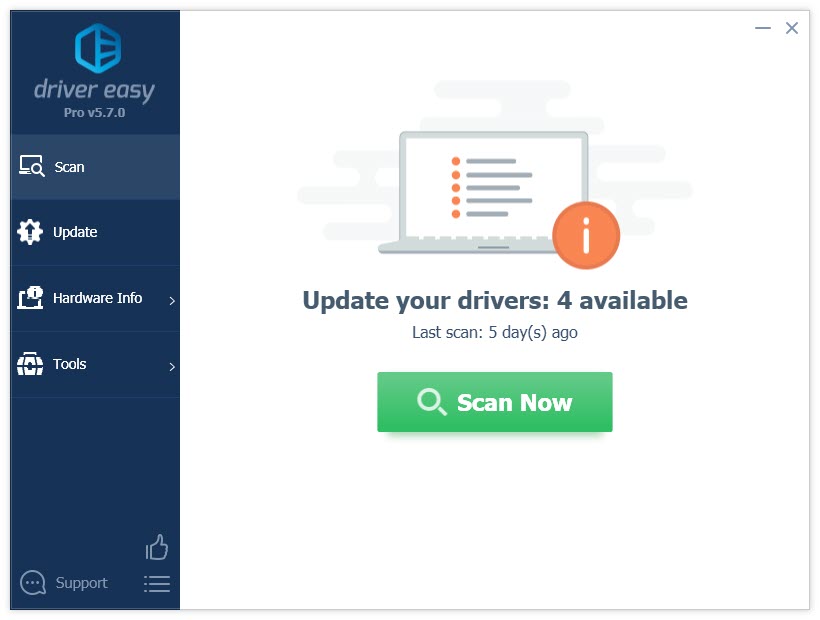
3. Click the Update button next to the flagged AMD graphics driver to automatically download the correct version of that driver, then you can manually install it (you can do this with the FREE version).
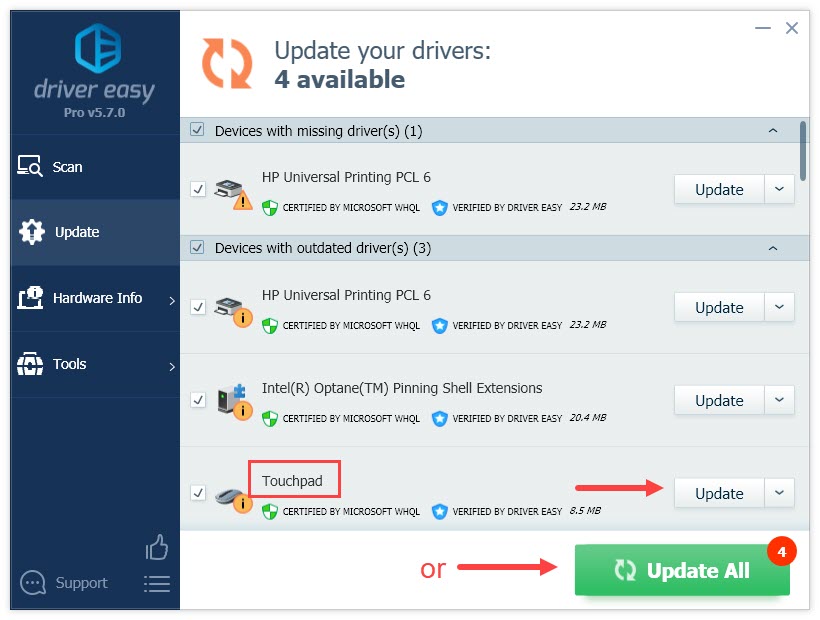
Or click Update All to automatically download and install the correct version of all the drivers that are missing or out of date on your system. (This requires the Pro version which comes with full support and a 30-day money back guarantee. You’ll be prompted to upgrade when you click Update All.)
4. Restart your PC for the changes to take full effect. If updating the driver didn’t do the trick, you can uninstall the touchpad driver and restart your PC to let Windows reinstall the driver for you.
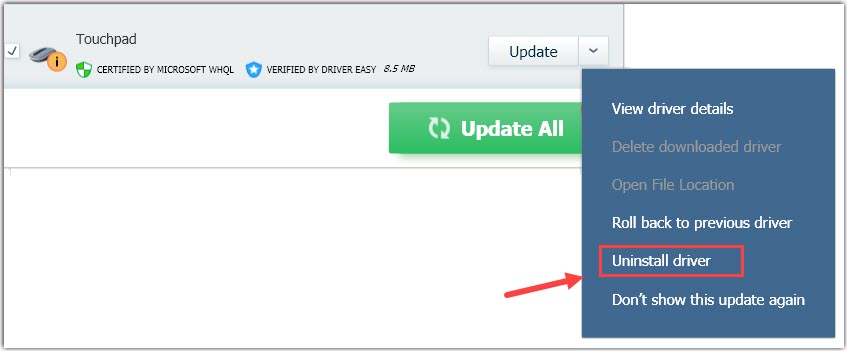
Fix 3. Run the hardware troubleshooter
Another possible fix for the touchpad driver missing problem is to use the hardware troubleshooter to locate the exact problem. Here’s how:
1. On your keyboard, press the Windows + R key and enter the following command line:
msdt.exe -id DeviceDiagnostic

2. Click Next to continue, and the troubleshooter tool will start detecting known issues with your touchpad.
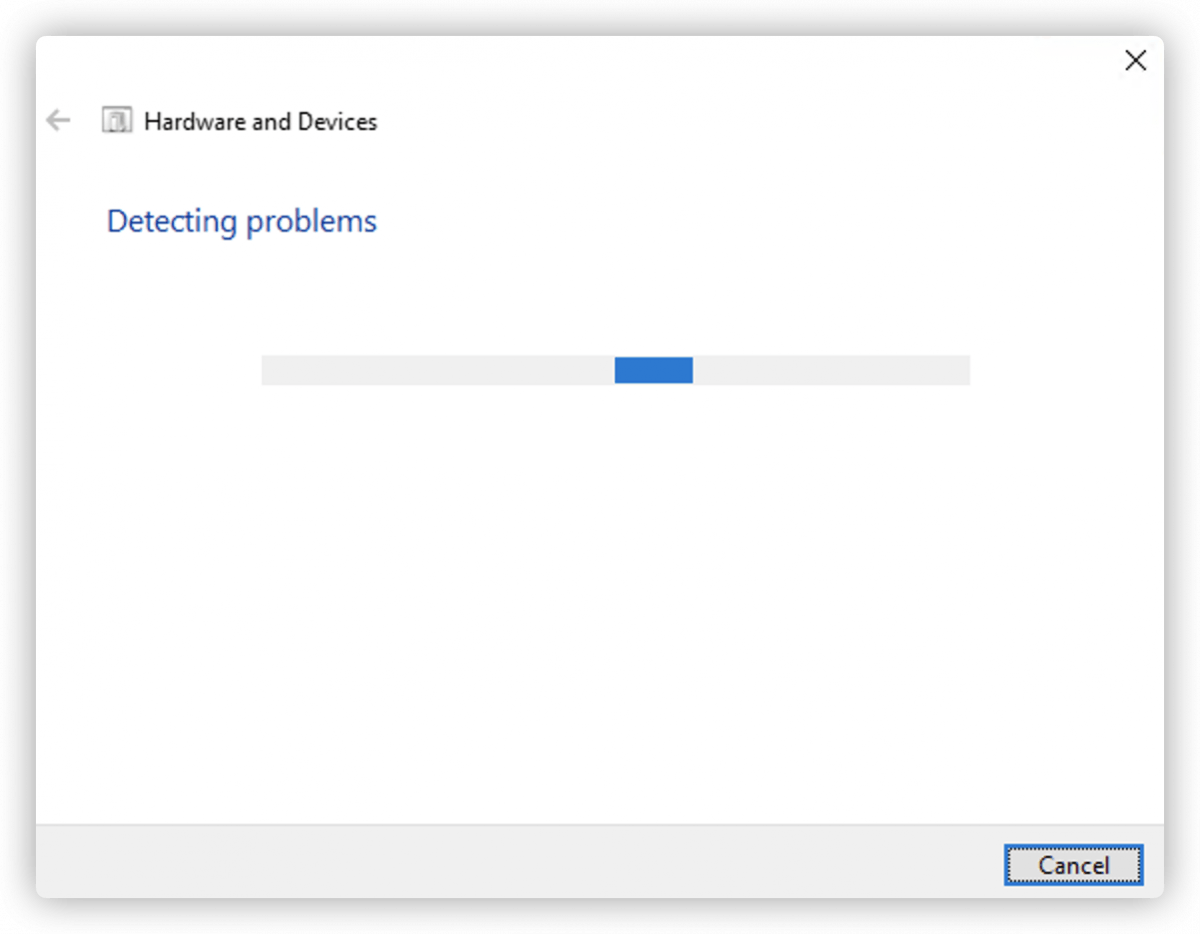
3. If the Windows diagnostic tool finds you any fixes, click Apply this fix. You might need to restart your computer for the changes to take effect.

If there are no problems detected, or the Windows built-in tool fails to fix the problem for your touchpad driver missing problem, there’re might be other underlying causes and you can go to the next fix below.
Fix 4. Check your battery
Sometimes the touchpad issue is related to your battery or hardware glitches, so you can try performing a hard reset to rule out the problems.
1. Close all your apps and shut down your PC.
2. Remove all the peripherals, including your power cable.
3. Check the battery carefully. Remove the battery for at least 30 seconds, and put it back in the case.
4. Turn on your PC and check if the touchpad is working again.
Fix 5. Restore your BIOS to default
If the fixes above didn’t help to solve your touchpad missing from the Device Manager issue, you might need to check your BIOS and set it to default to see if that helps.
1. Restart your computer and keep pressing the setup key (shown below) as soon as you see the manufacturer’s logo on the screen to enter the BIOS settings.
| Brand | BIOS Key |
|---|---|
| HP | F9 or Esc |
| Dell | F12 |
| Acer | F12 |
| Lenovo | F12 |
| Asus | Esc |
| Samsung | F12 |
| Sony | Esc |
| Microsoft Surface Pro | Volume Down Button |
2. Once you’re in the BIOS, you can press F9 or F5 to bring up a prompt that’ll allow you to restore the BIOS. You can also find the option under the Security tab or the Exit tab.
The name of the option allowing you to restore BIOS varies depending on what motherboard you have. It could be Reset to Default, Load Factory Defaults, Load Setup Defaults, Load Optimized Defaults, etc.
3. Use the arrow key to select Yes, then BIOS will be restored to default.

4. Once done, press the key next to Save and Exit.
5. Reboot your computer and check to see if the problem is resolved.
Fix 6. Repair corrupt files
If none of these fixes above solved your problem, there might be some critical system files missing that prevent your touchpad from working. To check and restore your system files, you can try the steps below.
Step 1. Scan corrupt files with System File Checker
System File Checker (SFC) is a Windows built-in tool to identify and repair corrupted system files.
1) On your keyboard, press the Windows logo key and R at the same time to open the Run box. Type cmd and press Ctrl+Shift+Enter to run Command Prompt as administrator.
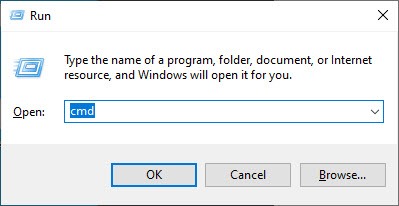
Click Yes when prompted for permission to make changes to your device.
2) In the Command Prompt, type the following command and hit Enter.
sfc /scannow
3) System File Check will begin to scan all system files and repair any corrupted or missing ones it detected. This may take 3-5 minutes.
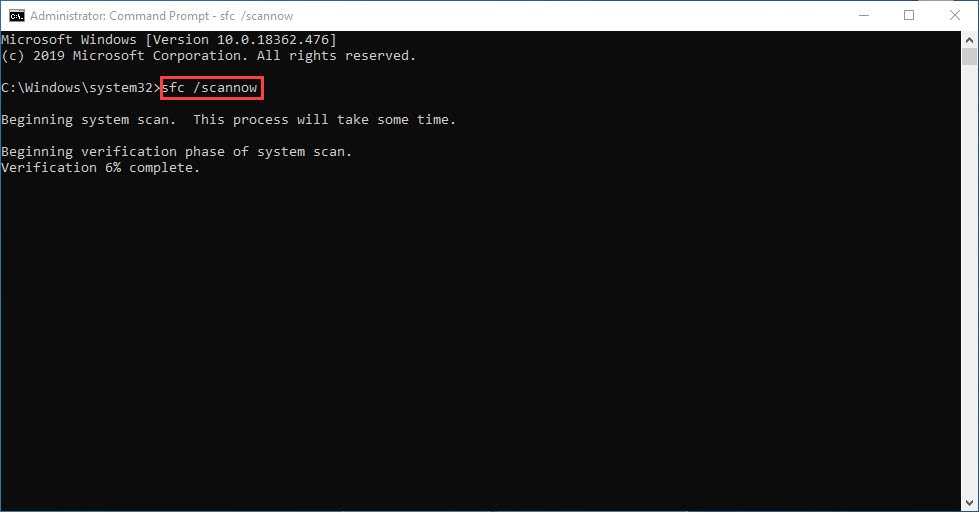
4) You may receive something like the following messages after the verification.
- no errors
- it fixed some errors
- could not fix all errors
- could not fix errors at all
- ……
No matter what message you receive, you can try running dism.exe (Deployment Image Servicing and Management) to check the device performance and health of your PC.
Step 2. Run dism.exe
1) Run Command Prompt as admin and enter the following commands.
- This command line will scan the health of your PC:
dism.exe /online /cleanup-image /scanhealth
- This command line will restore the health of your PC:
dism.exe /online /cleanup-image /restorehealth
2) After the restore health process finishes, you may get some error messages.
- If restoring heath gave you errors, you can always try this command line. This will take up to 2 hours.
dism /online /cleanup-image /startcomponentcleanup
- If you get Error: 0x800F081F with the restore health scan, reboot your PC and run this command line.
Dism.exe /Online /Cleanup-Image /AnalyzeComponentStore
If the System File Check finds any files corrupted, follow the on-screen instructions to repair them, and then restart your computer for the changes to take full effect.
There you have it – 6 methods for you to fix the touchpad driver missing issue. Feel free to drop us a line if you have any questions or suggestions.





